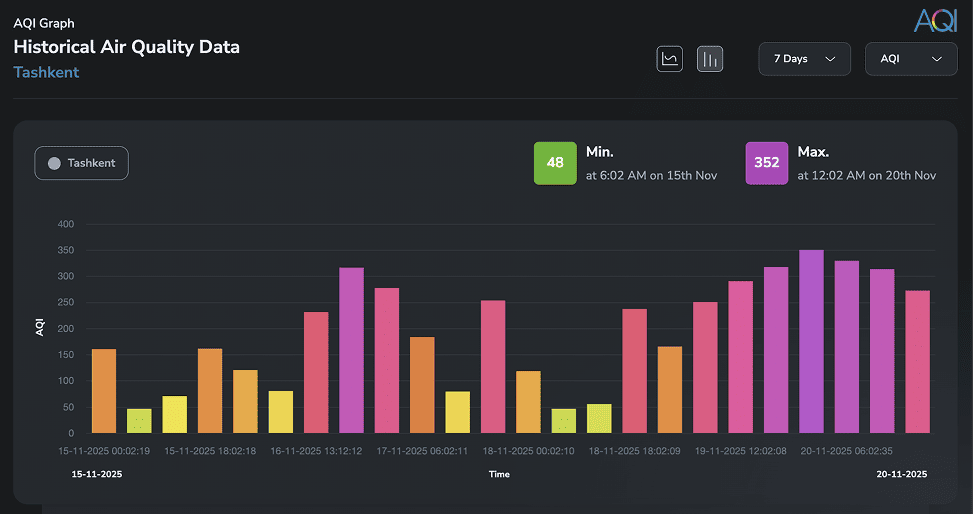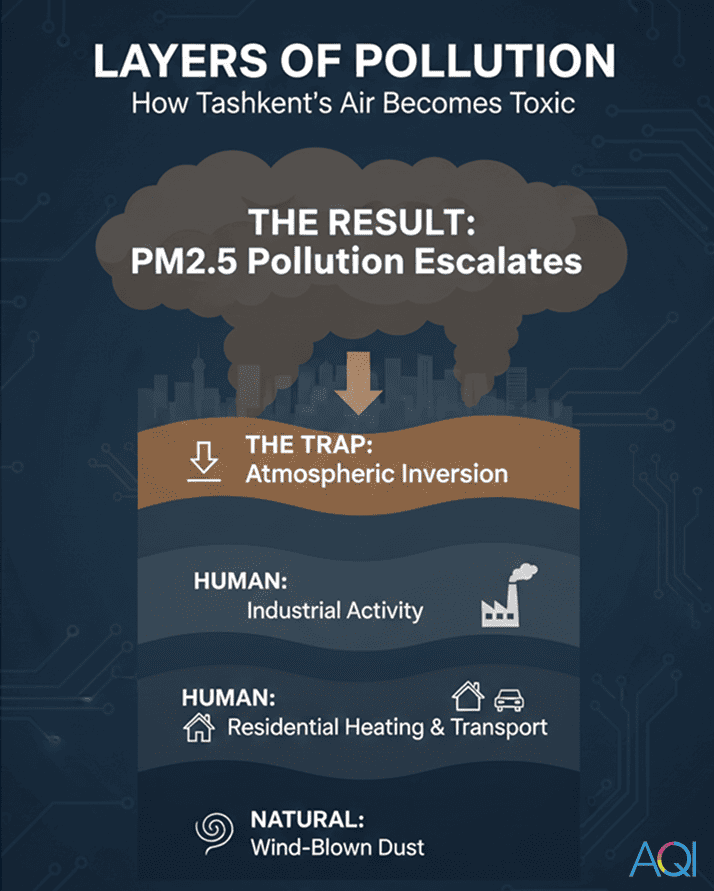Over the past few days, Tashkent’s air quality has experienced one of its strongest swings of the season. As a result, the latest AQI trend shows extreme day-to-day variation, with pollution levels rising from moderate to very unhealthy within hours.
Analysis of Tashkent’s Air Quality over the week

The 7-day visual from AQI.in shows a dramatic rise:
- Weekly Minimum: 48 AQI on 15 November
- Weekly Maximum: 352 AQI on 20 November
After a relatively cleaner start, the bars quickly transition, indicating a fast escalation in pollution from 18-20 November. This confirms Tashkent entered a phase where air stagnation and trapped emissions dominated the city’s pollution behaviour.
24-Hour Snapshot (20-21 Nov): Pollution Peaked at 384 AQI

The latest hourly graph shows even more intense values than before:
- 24-Hour Minimum: 179 AQI at on 20 Nov
- 24-Hour Maximum: 384 AQI at on 21 Nov
The bars remain well above 170 for the entire period, rising steadily through the evening and peaking in the early-morning hours.
The darkest purple segment around 3 AM marks the most hazardous moment of the cycle.
This pattern showing night-time accumulation followed by early-morning peaks is a classic signature of inversion-driven pollution.
Click here to view the Realtime and Historic Air Quality Insights at Tashkent, Uzbekistan.
Why the Sudden Surge?
Uzhydromet, Uzbekistan’s national meteorological and environmental monitoring agency, reported that the sudden jump in pollution was caused by a temperature inversion, a weather situation in which a layer of warmer air sits above cooler air near the surface. This traps pollutants close to the ground instead of allowing them to disperse, leading to a rapid buildup of fine particles across Tashkent.
The agency also noted that similar inversion-driven pollution is likely to affect other regions of the country over the next few days.
According to World Bank reports, Tashkent’s PM2.5 pollution comes from a mix of human and natural sources:
- Residential heating
- Transport emissions
- Industrial activity
- Wind-blown dust

As a result, these factors, combined with the week’s inversion, explain why pollution escalated so quickly and remained elevated.
What Residents Should Know
The final 48 hours of Tashkent’s air quality chart show AQI consistently above 300, meaning:
- Outdoor exposure becomes dangerous for everyone.
- People with asthma or heart issues should avoid outdoor activity completely.
- Early-morning hours, usually cleaner, were also polluted this week.
What This Means
Such unstable patterns suggest Tashkent’s air quality is highly sensitive to weather shifts, and even a mild inversion or low wind can push AQI into the dangerous zone. Thus, monitoring daily trends ,not just the daily average, are essential because the hourly spikes are severe.